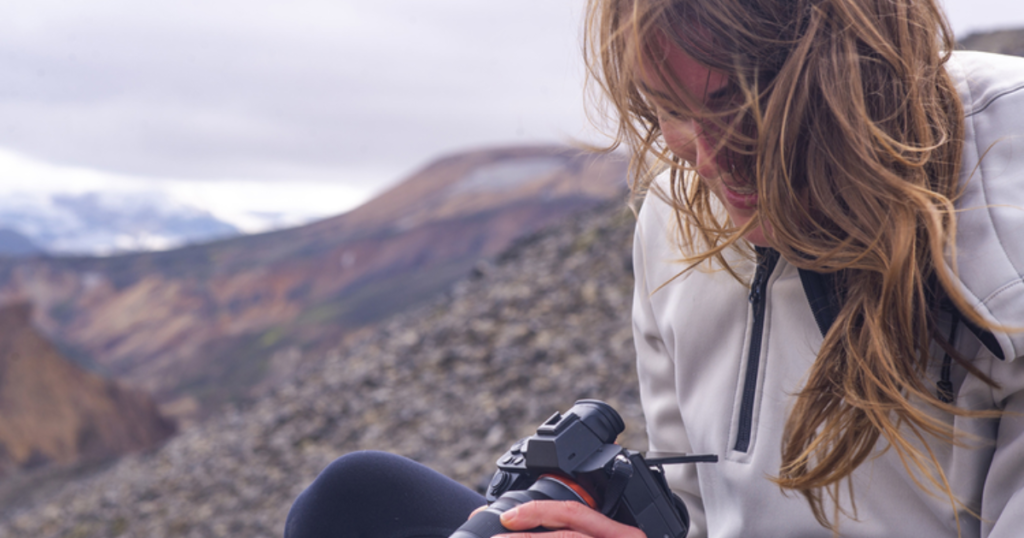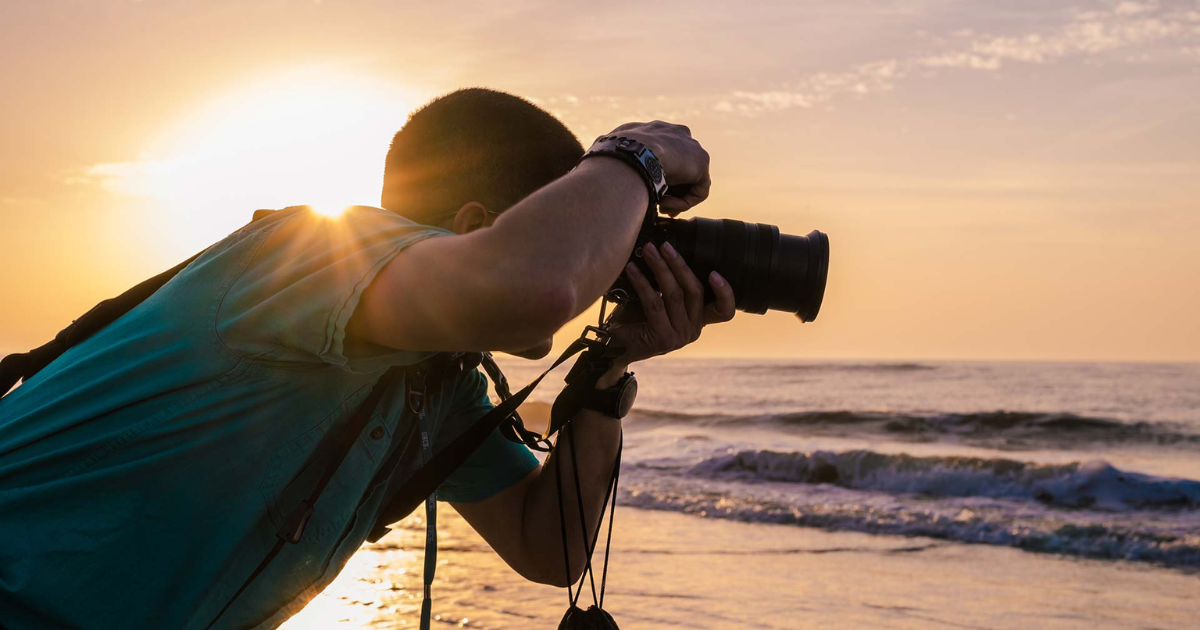Photography is more than just clicking a button—it’s about capturing moments, emotions, and stories through images. Whether you’ve just picked up your first camera or are considering diving into this creative world, this complete starter guide will walk you through the essentials of photography for beginners.
Understanding the Basics of Photography
Before diving into gear and techniques, it’s crucial to understand the foundational concepts that shape every great photograph.
What is Photography?
At its core, photography is the art and science of capturing light. A photograph is created when light reflects off a subject and enters a camera through a lens, hitting a light-sensitive surface—either film or a digital sensor.
The Exposure Triangle
The exposure triangle is the foundation of photography. It consists of three key elements:
1. Aperture
- Controls the amount of light that enters the lens.
- Measured in f-stops (e.g., f/2.8, f/5.6).
- Affects depth of field (background blur).
2. Shutter Speed
- Determines how long the camera’s sensor is exposed to light.
- Measured in seconds or fractions (e.g., 1/250, 2s).
- Affects motion blur or freeze.
3. ISO
- Indicates the sensor’s sensitivity to light.
- Higher ISO = more sensitivity but more noise.
- Measured numerically (e.g., ISO 100, ISO 1600).
Mastering the exposure triangle helps you take control over your images.
Choosing the Right Camera and Gear
When starting out, it’s easy to get overwhelmed by the vast range of camera equipment available. Here’s a simple breakdown.
Types of Cameras
DSLR (Digital Single-Lens Reflex)
- Interchangeable lenses
- Optical viewfinder
- Great for both beginners and pros
Mirrorless Cameras

- Compact and lightweight
- Interchangeable lenses
- Electronic viewfinder or LCD screen
Point-and-Shoot Cameras
- Fixed lens
- Compact and user-friendly
- Good for casual photography
Smartphone Cameras
- Convenient and accessible
- Increasingly powerful with manual settings available
Essential Accessories
- Tripod: For stable shots, especially in low light
- Memory Cards: Store images (go for high-speed, high-capacity)
- Camera Bag: Protects your gear on the go
- Extra Batteries: Essential for long shoots
- Lens Cleaning Kit: Keeps your glass spotless
Understanding Camera Settings and Modes
Automatic vs. Manual Mode
- Auto Mode: The camera makes all the decisions.
- Manual Mode: Full control over aperture, shutter speed, and ISO.
Semi-Automatic Modes
- Aperture Priority (A or Av): You set the aperture; the camera picks the shutter speed.
- Shutter Priority (S or Tv): You set the shutter speed; the camera picks the aperture.
- Program Mode (P): The camera chooses settings, but you can adjust exposure.
White Balance
Adjusts the color temperature of your images. Common presets include:
- Daylight
- Cloudy
- Tungsten
- Fluorescent
- Custom
Composition Techniques
Great photography isn’t just technical—it’s also about creative vision. Composition plays a huge role in making your photos stand out.
Rule of Thirds
Divide your frame into a 3×3 grid. Place important elements along the lines or at their intersections for balanced images.
Leading Lines
Use natural lines (roads, fences, rivers) to guide the viewer’s eye through the image.
Framing
Use elements like windows or branches to frame your subject and add depth.
Negative Space
Leave empty space around your subject to create a minimalist and focused composition.
Symmetry and Patterns
Symmetrical compositions and repeated patterns can create visually striking images.
Lighting: The Heart of Photography
Light can make or break a photo. Understanding how to use and manipulate it is crucial.
Types of Lighting
Natural Light
- Comes from the sun
- Can be harsh (midday) or soft (golden hour)
Artificial Light
- Includes lamps, flashes, and LEDs
- Useful for indoor and studio photography
Golden Hour vs. Blue Hour
- Golden Hour: Right after sunrise or before sunset; produces warm, soft light.
- Blue Hour: Twilight period; offers cool, moody tones.
Using Reflectors and Diffusers
- Reflectors: Bounce light onto your subject
- Diffusers: Soften harsh light sources
Basic Editing and Post-Processing
Post-processing is where you enhance your photos. Even simple adjustments can make a huge difference.
Common Editing Tools
- Adobe Lightroom: Great for color correction and exposure adjustments
- Adobe Photoshop: Advanced editing and retouching
- Snapseed: Mobile editing with powerful tools
- Canva: Simple online tool for basic edits and layouts
Key Edits for Beginners
- Adjust exposure, contrast, and brightness
- Crop for better composition
- Enhance colors and saturation
- Sharpen and reduce noise
Developing Your Photography Style

With practice, you’ll begin to discover your own creative preferences.
Experiment With Genres
- Portrait: Focus on people and expressions
- Landscape: Capture wide scenes and natural beauty
- Street: Candid moments in urban settings
- Macro: Close-up shots with lots of detail
- Wildlife: Animals in their natural habitat
Find Inspiration
- Follow photographers on Instagram, Pinterest, or photography websites
- Join local or online photography groups
- Analyze images you admire—what makes them stand out?
Keep Practicing
Photography is a skill that improves over time. The more you shoot, the better you understand your camera, your style, and your creative voice.
Also Read: 10 Hobbies That Will Keep Your Mind Sharp
Conclusion
Photography is a rewarding hobby and a powerful form of storytelling. Starting out can seem daunting, but with the right foundation, gear, and mindset, you can create images that speak volumes. Remember, every expert photographer was once a beginner. Don’t be afraid to make mistakes—each one is a step forward in your creative journey.
So pick up your camera, go outside, and start capturing the world through your eyes.
FAQs
Q. What’s the best camera for a beginner?
A mirrorless or entry-level DSLR camera like the Canon EOS Rebel or Sony Alpha series is ideal for beginners. Smartphones with manual controls are also great starting tools.
Q. How can I learn photography for free?
There are numerous free resources online including YouTube tutorials, blogs, and forums like Reddit’s r/photography. Many apps also offer free trials and tutorials.
Q. Do I need expensive gear to take good photos?
Not at all. Great photos come from understanding light, composition, and timing—not just gear. You can capture amazing shots even with a smartphone.
Q. How do I get better at photography?
Practice regularly, study other photographers’ work, seek feedback, and challenge yourself with different subjects and lighting conditions.
Q. Should I shoot in RAW or JPEG?
RAW files retain more image data and offer better flexibility in editing. JPEG files are smaller and easier to share. As a beginner, start with JPEG and switch to RAW as you grow.

